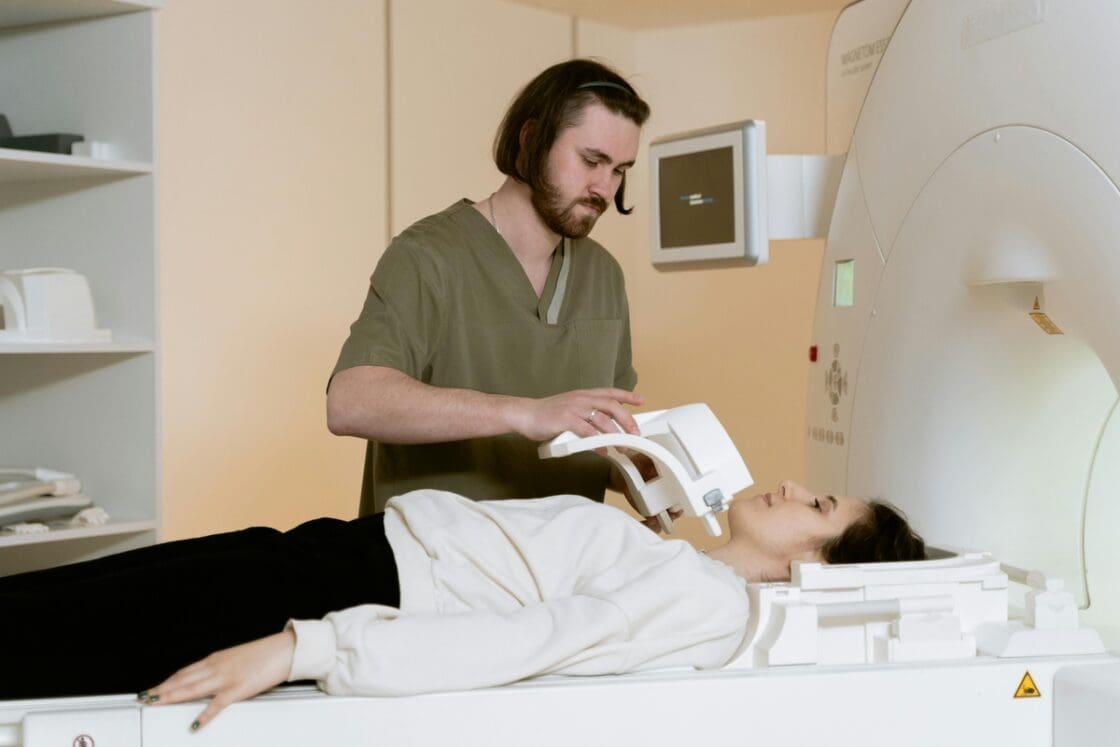
These days, everyone is on the lookout for the next sorcerer’s stone — a simple answer that stops aging in its tracks and enables us to live longer, healthier lives. From intermittent fasting to cold water plunges, there’s been a fair amount of bandwagoning in wellness circles regarding these “healthy” practices.
But while some habits do indeed promote longevity, others may not have the benefits some snake oil salesmen claim. Even worse? Some of these fads may even be cutting down your lifespan, especially if you’re a woman.
So which habits should you cling to and which should join low-fat diets and sugar-free soda in the pile of outdated trends? And do any of these trends actually unlock how to live longer? Here’s what the experts have to say about today’s most popular wellness trends.
1. Intermittent Fasting
The benefits of intermittent fasting, from improved heart health to reduced inflammation and weight loss, are well documented. A 2021 study in Nature Aging showed that fasting could reduce cellular aging and mitigate the likelihood or symptoms of autoimmune disorders, neurodegeneration, metabolic disease, and even cancer1. The only problem? The vast majority of these studies were performed on mice or men — and for women, it’s a whole different ball game.
A 2012 study in Obesity Research found that women with a healthy body weight who begin alternate-day fasting could experience impaired glucose response2. Similarly, a 2022 study in Obesity found that women fasting for between 18 and 20 hours a day experienced on average a 14% drop in DHEA (a hormone that supports estrogen production) over the course of eight weeks3.

“There was no significant drop in estrogen during the course of the study, which is good news,” says cognitive neuroscientist Therese Huston, Ph.D., author of Sharp: 14 Simple Ways to Improve Your Life with Brain Science, who was not involved in the study. “But if women were doing time-restricted eating long-term, for a year, let’s say, that drop in DHEA could affect their hormone production.”
Dave Asprey, 4x NY Times Bestselling Author of Heavily Meditated, agrees. “If they’re not getting enough recovery or enough food, their bodies will freak out and say, ‘No, it’s not safe here. We don’t have enough resources to make a baby,’” he says. “As a result, your reproductive system shuts down and you’ll feel anxious all the time. That’s not great for longevity.”
Nevertheless, Asprey notes that women can still reap the benefits of intermittent fasting, albeit with a few tweaks. He recommends that women be “gentler with their fasts,” fasting three times a week rather than daily, and for 12 hours rather than 16.
2. Cold Water Exposure
Cold water plunges have been popular in Nordic cultures for generations, and for good reason. Modern science confirms that the health benefits of cold water immersion include reduced inflammation and improved resiliency4.
However, Huston cautions that certain people, such as those with heart conditions, need to be particularly cautious before embracing this practice. And as with intermittent fasting, women may also want to take a less extreme approach to reap the cold plunge benefits.

“Exercise physiologist Dr. Stacey Sims has pointed out that women often respond differently to extreme cold than men do,” she says. “In very cold conditions, think ice bath, women often experience the high stress levels without the shivering that stimulates metabolic benefits like glucose tolerance.”
As an alternative, Huston cites research that seems to indicate that 60-degree plunges can be beneficial for women5. “After this kind of moderate cold water swim,” she says, “women often report lower levels of anxiety and depression and enjoy better sleep, while older women often report fewer hot flashes.”
3. Continuous Glucose Monitors
Continuous glucose monitors (CGMs) are all the rage at the moment, and not just among people with diabetes. These monitors offer users real-time insights into glucose fluctuations, which some experts have deemed “the ultimate biohack6.” And since some studies show that glucose dysregulation may be more common among healthy people than previously thought, it’s no surprise that many are jumping on the CGM bandwagon7.
“Continuous glucose monitors are absolutely useful for longevity,” says Asprey. “They can identify which foods work with your biology and which ones don’t. They can also help identify glucose control issues so you can address them long before they become a problem. Diabetes increases your risk of cardiovascular disease, cancer, and Alzheimer’s. These all reduce life expectancy. You want to make sure your body is metabolically flexible and able to utilize glucose effectively.”

On the other hand, some experts believe these monitors can introduce more stress than they relieve. “Continuous glucose monitors can be a life-saver for individuals with diabetes, but for the average healthy individual, it’s more fad than fabulous,” says Huston. In one study of 153 non-diabetics, glucose readings were normal 96% of the time, with many of the spikes attributed to sensor errors8.
“Basically, if you’re healthy, your body keeps sugar in check on its own, without the need for an expensive gadget,” she says. “It’s a fun curiosity, no doubt, and for people who love data, it’s probably highly satisfying to see what their avocado toast did to their blood sugar, but for healthy individuals, it’s not likely to add years to your life.”
4. Full Body Scans
We never really have a full picture of what’s going on inside our bodies, which according to the Wall Street Journal, is part of the reason why full body MRIs and other scans have become popular among certain wealthy health nerds9. Asprey, for one, is a big fan.
“If you have the budget, full body MRIs like Prenuvo change lives,” he says, noting that one in every 20 scans identifies “a potentially life-saving diagnosis.” But as Scrubs showed us back in 2004, most of the time, these scans are expensive ways of inviting even more anxiety about your health10.
“These scans seem like they will offer you incredible insights into your body, but for healthy individuals, they often introduce more problems than solutions,” says Huston, who notes that the potential for “false alarms or false positives” is high.

“The scans detect something small, the person then worries and does a cascade of tests and biopsies, often invasive and potentially painful, just to learn it was nothing, or at least completely benign, in the end,” she says.
And since these scans typically cost several thousand dollars — and aren’t covered by insurance — they may just be an expensive headache. “It’s much wiser to spend your time and money on things that are proven to be health-promoting, like preventative screenings, regular check-ups, and exercise,” she says. “My advice? Spend the money you would have spent on a scan on a gym membership.”
5. Extreme Diets
Diets eliminating everything from carbs to gluten to animal products have become par for the course. But according to our experts, adhering to an extreme diet may cause more problems than solutions.
“One fad that concerns me are the all-carnivore diets,” says Huston. “The all-carnivore diet, which involves only eating meat, hasn’t been properly studied to prove that it’s safe.”

Asprey, meanwhile, is critical of the opposite. While research seems to support the view that a plant-based diet may contribute to reduced risk of diabetes, diverticular disease, and cataracts, studies also show that vegans have a higher risk for fractures11. Asprey believes that the lack of bioavailability of certain vitamins and minerals in plant foods, compounded with the presence of anti-nutrients like lectins, oxalates, and phytic acid, could lead to deficiencies.
It’s the extremity of either approach that worries Huston. “Eating only one kind of food creates nutrient imbalances,” she says, “and we don’t know the long term effects of those imbalances.”
Most research shows that a balanced omnivorous diet like the Mediterranean diet is likely the best for longevity. A 2018 research review in Current Opinion in Clinical Nutrition & Metabolic Care encompassing 19 reports from large prospective studies showed “with nearly perfect consistency” that this diet is likely to reduce the risk of chronic disease and ultimately increase life expectancy12.
Final Thoughts
While there are certainly positive outcomes that can be achieved from any one of these wellness trends, it’s wise to take them all with a grain of salt. If you love an ice bath and feel it has positive effects on your mental health, go for it! But be wary of any fad that promises to be the key to longevity — the true secrets to living a long and healthy life are more about consistency than a single golden ticket.
Sources:
- https://pubmed.ncbi.nlm.nih.gov/35310455/
- https://onlinelibrary.wiley.com/doi/full/10.1038/oby.2005.61
- https://onlinelibrary.wiley.com/doi/10.1002/oby.23562
- https://www.mayoclinichealthsystem.org/hometown-health/speaking-of-health/cold-plunge-after-workouts
- https://pmc.ncbi.nlm.nih.gov/articles/PMC10928965/
- https://www.arangio.com/blog/truth-about-continuous-glucose-monitors
- https://med.stanford.edu/news/all-news/2018/07/diabetic-level-glucose-spikes-seen-in-healthy-people.html
- https://www.health.harvard.edu/blog/is-blood-sugar-monitoring-without-diabetes-worthwhile-202106112473
- https://www.wsj.com/health/wellness/full-body-preventive-scan-cost-eb291fcc
- https://scrubs.fandom.com/wiki/My_Fault
- https://pmc.ncbi.nlm.nih.gov/articles/PMC7613518/
- https://pmc.ncbi.nlm.nih.gov/articles/PMC5902736/

